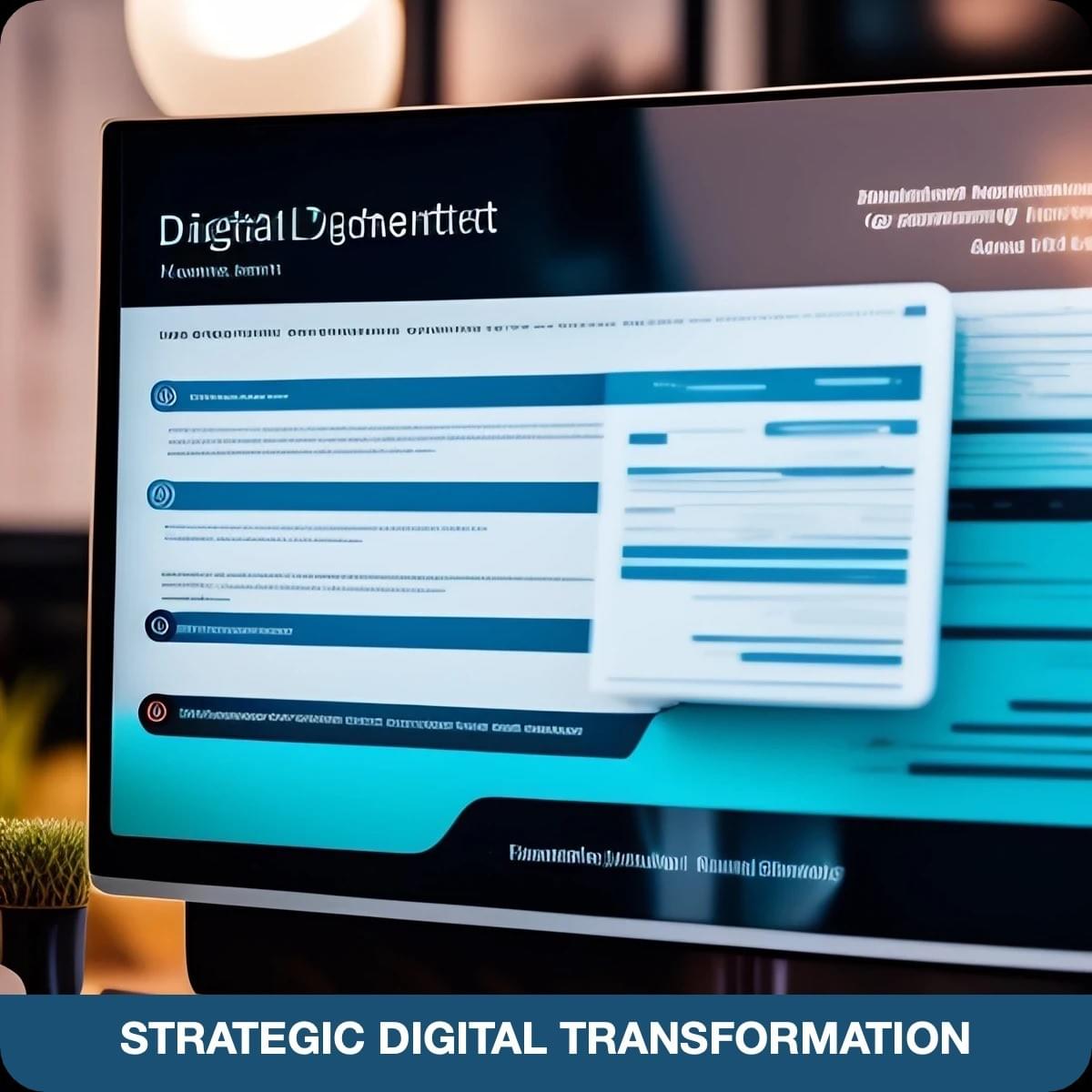

Advisory
KARBL provides advisory services that help organisations navigate and capitalise on the opportunities presented by digital technologies. This can include areas such as digital strategy, digital marketing, e-commerce, digital transformation, cyber security, technology roadmaps and organisational transformation. The goal of KARBL is to help organisations improve their online presence, increase revenue, enhance customer engagement and increase shareholder value. We provide a holistic approach to digital transformation which includes analysis of business, market, technology and people.
KARBL is experienced in working with private equity, capital funds on mergers and acquisitions, and technology due diligence. Our advisors are active Non-Executive Directors, Board Advisors and have extensive C-level Group Executive experience.
Services

KARBL provides insights for the executive team and corporate board on technology-related matters. We help navigate the rapidly changing technology landscape.
KARBL provides a variety of services, including:
- Strategic guidance: Help companies develop and execute their technology strategies. We can also provide insights on emerging technologies and trends that could impact the company's business.
- Mentorship: KARBL can offer guidance and support to the company's executive team and employees. We can also help the company identify and develop new talent.
- Networking: KARBL also helps connect the company with other businesses, industry leaders, and investors. This can help the company expand its network and opportunities.
Our advisors come from a variety of backgrounds, including academia, government, industry, and the private sector.

KARBL helps organizations develop and execute their digital transformation strategies. Our advisors have deep expertise in the areas of technology, business, and strategy, and they can help organisations identify and capitalise on new opportunities, improve their operations, and create a more customer-centric experience.
These services typically include:
- Strategy development: We can help organisations develop a clear vision for their digital transformation, identify the key goals and objectives, and develop a roadmap for achieving them.
- Business transformation: Align organisation's business processes, systems, and culture with its digital transformation goals.
- Technology implementation: Implement, and integrate the right technologies to support their digital transformation goals.
- Change management: Manage the change associated with digital transformation, including employee training, communication, and adoption.

Technology due diligence is a critical part of any merger or acquisition (M&A) transaction. It involves a thorough review of the target company's IT infrastructure, systems, and processes. The goal of technology due diligence is to identify any potential risks or challenges that could impact the success of the merger or acquisition.
Some of the key areas that are typically reviewed during technology due diligence include:
- IT infrastructure: This includes the target company's hardware, software, and network. The due diligence team will want to assess the age, condition, and compatibility of the target company's IT assets.
- IT systems: This includes the target company's applications, databases, and data storage systems. The due diligence team will want to assess the functionality, security, and compliance of the target company's IT systems.
- IT processes: This includes the target company's IT policies, procedures, and user management. The due diligence team will want to assess the effectiveness of the target company's IT governance and risk management practices.
Some of the benefits of conducting technology due diligence before an M&A transaction:
- It can help to identify potential risks and challenges that could impact the success of the merger or acquisition.
- It can help to ensure that the acquiring company is getting a fair value for the target company's IT assets.
- It can help to identify opportunities for cost savings and efficiency improvements.
- It can help to ensure that the acquiring company is in compliance with all applicable laws and regulations.
If you are considering an M&A transaction or are readying a business for one contact KARBL

Cyber security assessment and remediation is the process of identifying, assessing, and mitigating cyber security risks. It is a critical part of any organization's cyber security program.
Any business should take Cyber security seriously. What some businesses don't know is that it plays an important part in valuation during a transaction if a business is to sell or merge.
If you are concerned about your organization's cyber security, it is important to conduct cyber security assessments and remediation. There are a number of qualified cybersecurity firms that can help you with this process.
Here are some of the steps involved in cyber security assessment and remediation:
- Identify assets. The first step is to identify all of the assets that need to be protected. This includes both physical assets, such as computers and servers, and intangible assets, such as data and intellectual property.
- Identify threats. Once you have identified your assets, you need to identify the threats that they face. This includes both internal threats, such as disgruntled employees, and external threats, such as hackers and cybercriminals.
- Assess risks. Once you have identified the threats, you need to assess the risks that they pose to your assets. This involves considering the likelihood that a threat will occur and the impact that it would have if it did occur.
- Implement controls. Once you have assessed the risks, you need to implement controls to reduce them. Controls can be technical, such as firewalls and intrusion detection systems, or they can be administrative, such as security policies and procedures.
Monitor and review. It is important to monitor and review your cyber security program on an ongoing basis. This will help you to identify new threats and ensure that your controls are effective.
Digital News
Experience






